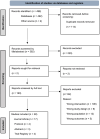Conversational Agents to Support Pain Management: A Scoping Review
- PMID: 40170347
- PMCID: PMC11962237
- DOI: 10.1002/ejp.70016
Conversational Agents to Support Pain Management: A Scoping Review
Abstract
Background: Pain-related conditions are the leading cause of years lived with disability globally. Managing pain presents significant challenges, including the need to address multiple biopsychosocial factors and the difficulty in delivering evidence-based treatments. Digital health technologies, such as conversational agents, offer the potential for personalised and accessible pain management. However, the characteristics and effectiveness of these interventions are not yet fully understood. This scoping review aims to comprehensively evaluate the applications and effectiveness of conversational agents in supporting pain management in adults (i.e., healthy individuals at risk of developing pain, individuals currently experiencing pain and healthcare providers or students involved in managing pain conditions).
Methods: Searches were systematically conducted across six databases-MEDLINE PubMed, ACM Digital Library, CINAHL, Embase, PsycINFO, Cochrane CENTRAL-and five trial registries from inception.
Results: Twenty-eight studies were included, focusing on capturing health information (n = 8), providing emotional support (n = 7), facilitating adherence to self-management exercises (n = 6), delivering psychological treatment (n = 5), offering organisational support (n = 1) and educating healthcare providers (n = 1). These studies addressed conditions with pain as a central or common symptom, including dementia (n = 7), cancer (n = 5) and musculoskeletal disorders (n = 4), among others. None of the conversational agents on the market covered all four stages recommended for translational research (development, feasibility, effectiveness and implementation).
Conclusion: The use of conversational agents in pain management is relatively new and involves diverse and promising appllications. However, evidence supporting their effectiveness in improving pain-related outcomes remains limited and heterogeneous. Future reseacrh should prioritise feasibility, reliability, and user experience studies to inform the design of robust randomised controlled trials.
Significance: This scoping review comprehensively examines the use of conversational agents (CAs) in adult pain management. The study identified six applications of CAs to support pain management and highlights a lack of high-quality randomised controlled trials, particularly those preceded by development and feasibility studies. Clinicians and researchers can use these insights to guide future studies and improve applications of CAs in pain management.
Keywords: artificial intelligence; artificial intelligence assistants; chatbot; conversational agents; pain management; review.
© 2025 The Author(s). European Journal of Pain published by John Wiley & Sons Ltd on behalf of European Pain Federation ‐ EFIC ®.
Conflict of interest statement
R.R.N.R. provided consultancy on pain education content for a digital health company not related to conversational agents. The other authors have no conflicts of interest to declare.
Figures
References
-
- ACTRN12621001010886 . 2021. “Evaluating the Effectiveness of a Social Robot Intervention on Pain Management in People Older Than 65 and Older Who Have Dementia Living in Residential Aged Care Facilities: A Cluster Randomised Controlled Tria.” https://www.anzctr.org.au/Trial/Registration/TrialReview.aspx?id=382165.
-
- Blasco, J. M. , Diaz‐Diaz B., Igual‐Camacho C., Perez‐Maletzki J., Hernandez‐Guilen D., and Roig‐Casasus S.. 2023. “Effectiveness of Using a Chatbot to Promote Adherence to Home Physiotherapy After Total Knee Replacement, Rationale and Design of a Randomized Clinical Trial.” BMC Musculoskeletal Disorders 24, no. 1: 491. 10.1186/s12891-023-06607-3. - DOI - PMC - PubMed
Publication types
MeSH terms
Grants and funding
LinkOut - more resources
Full Text Sources
Medical





